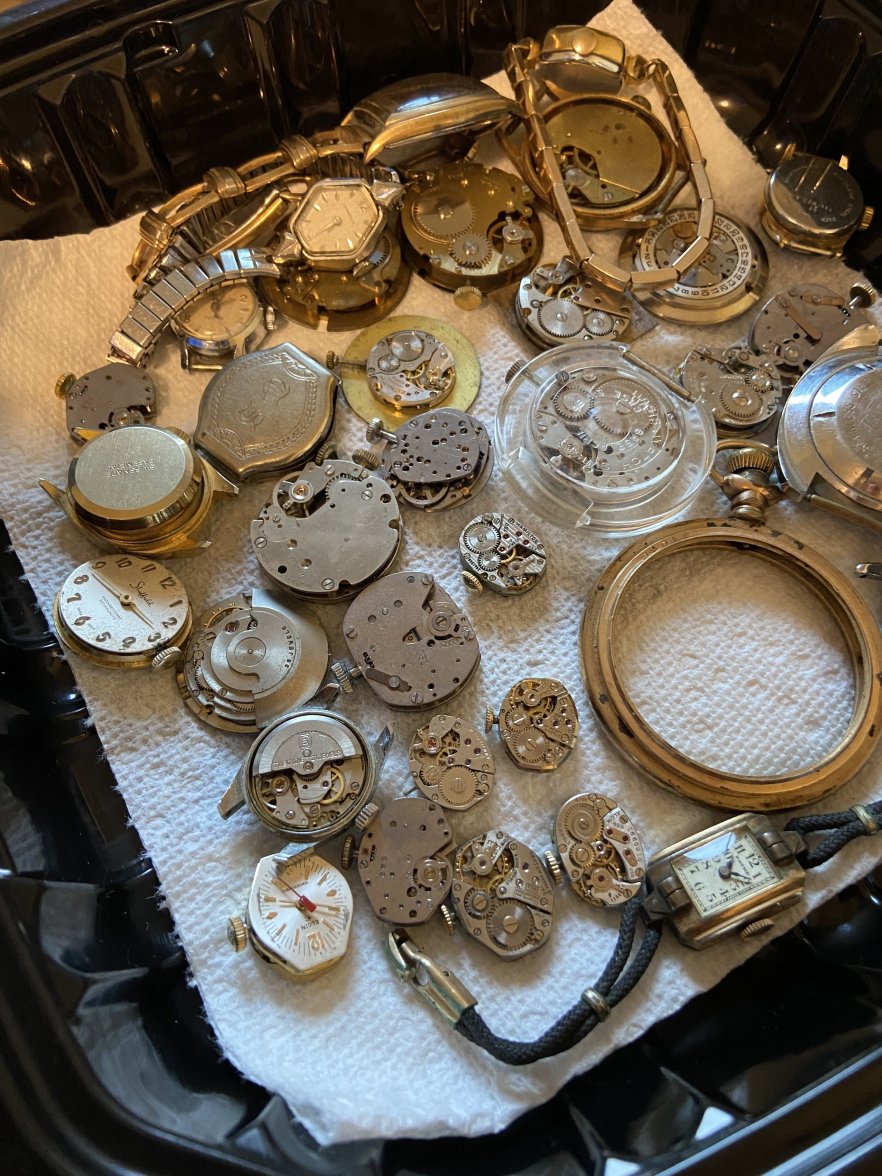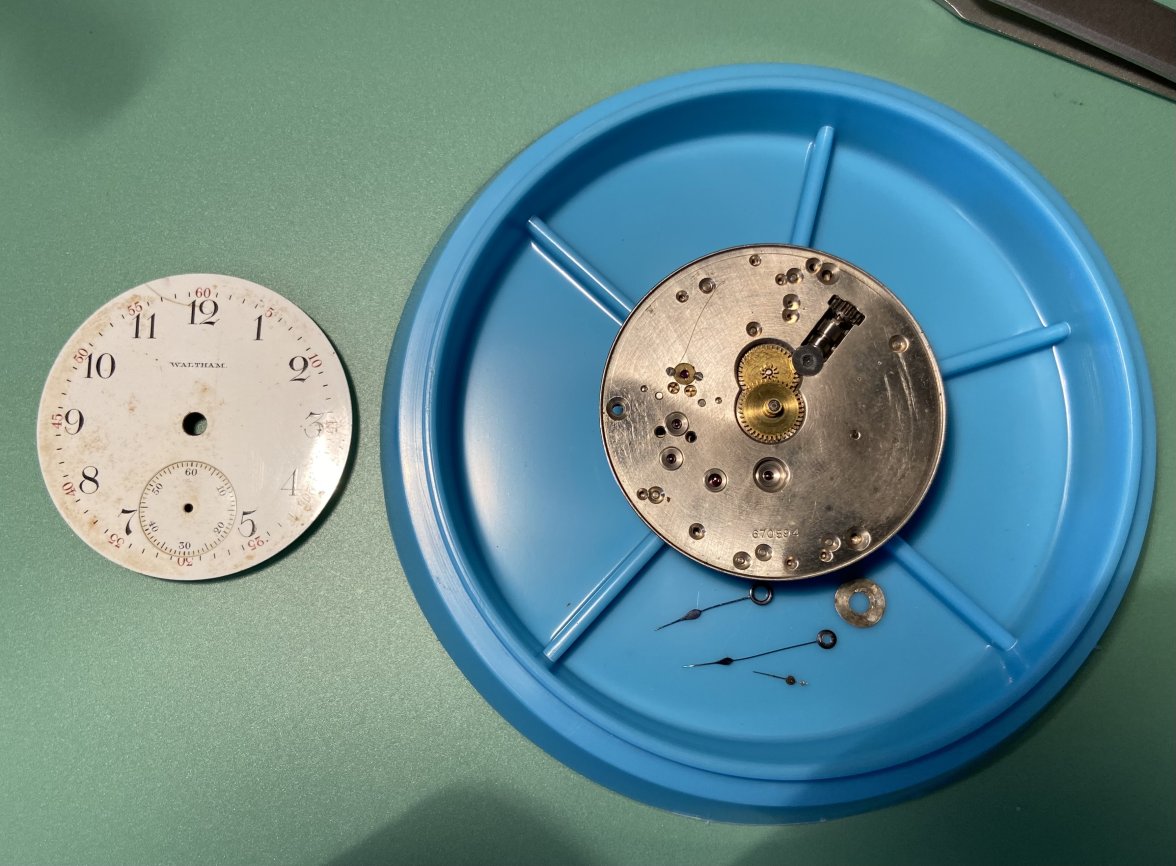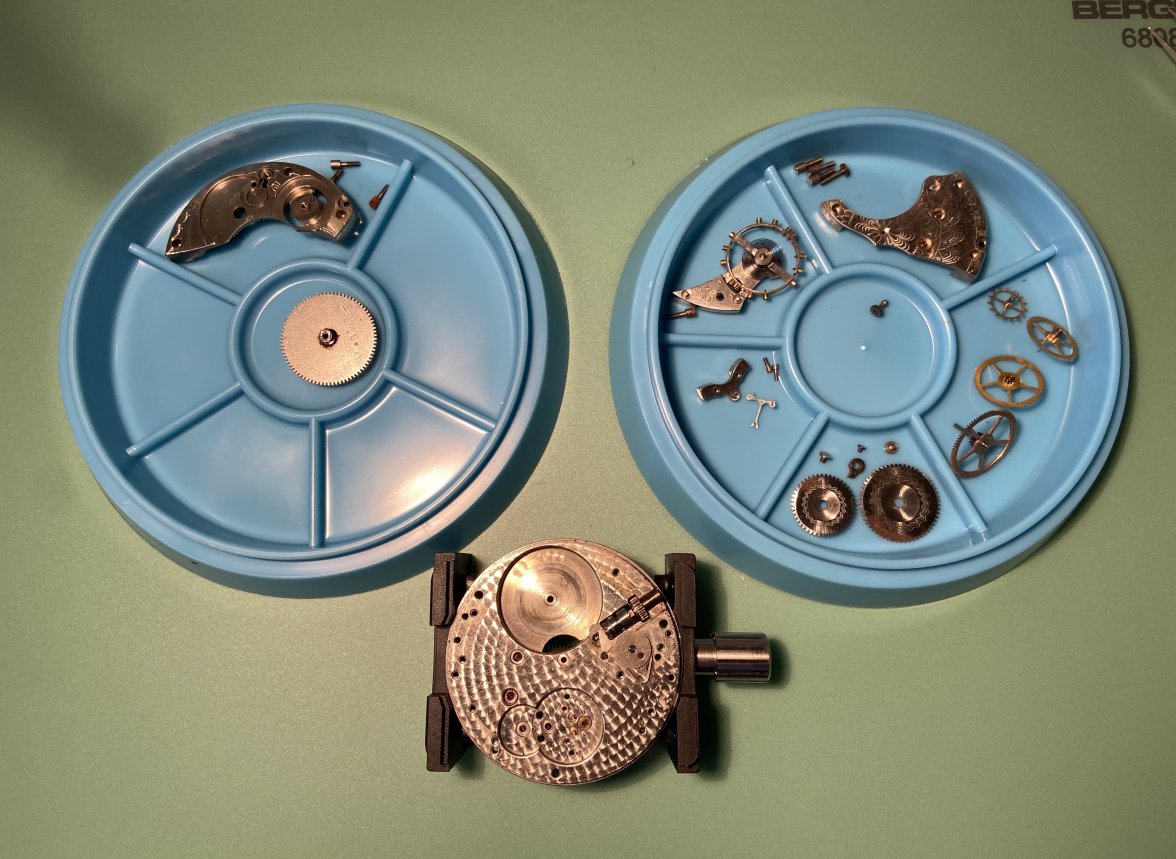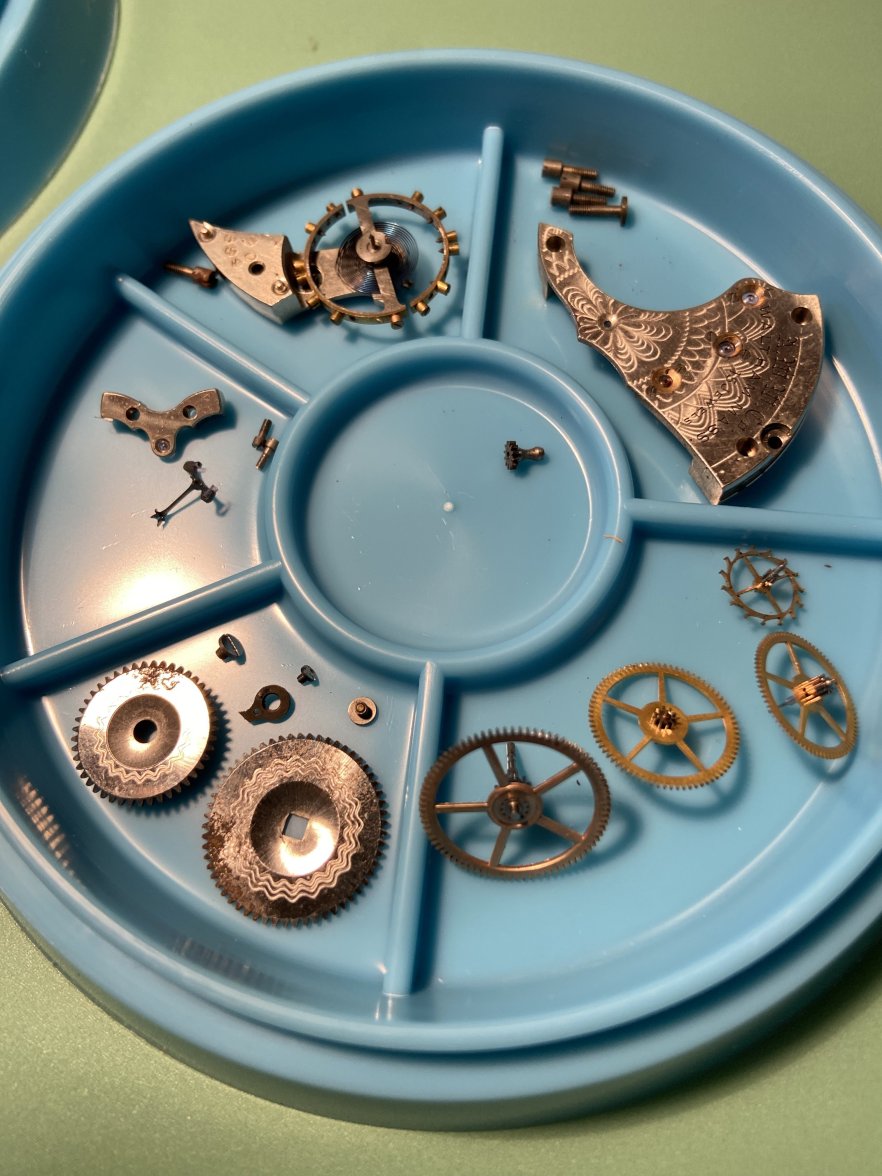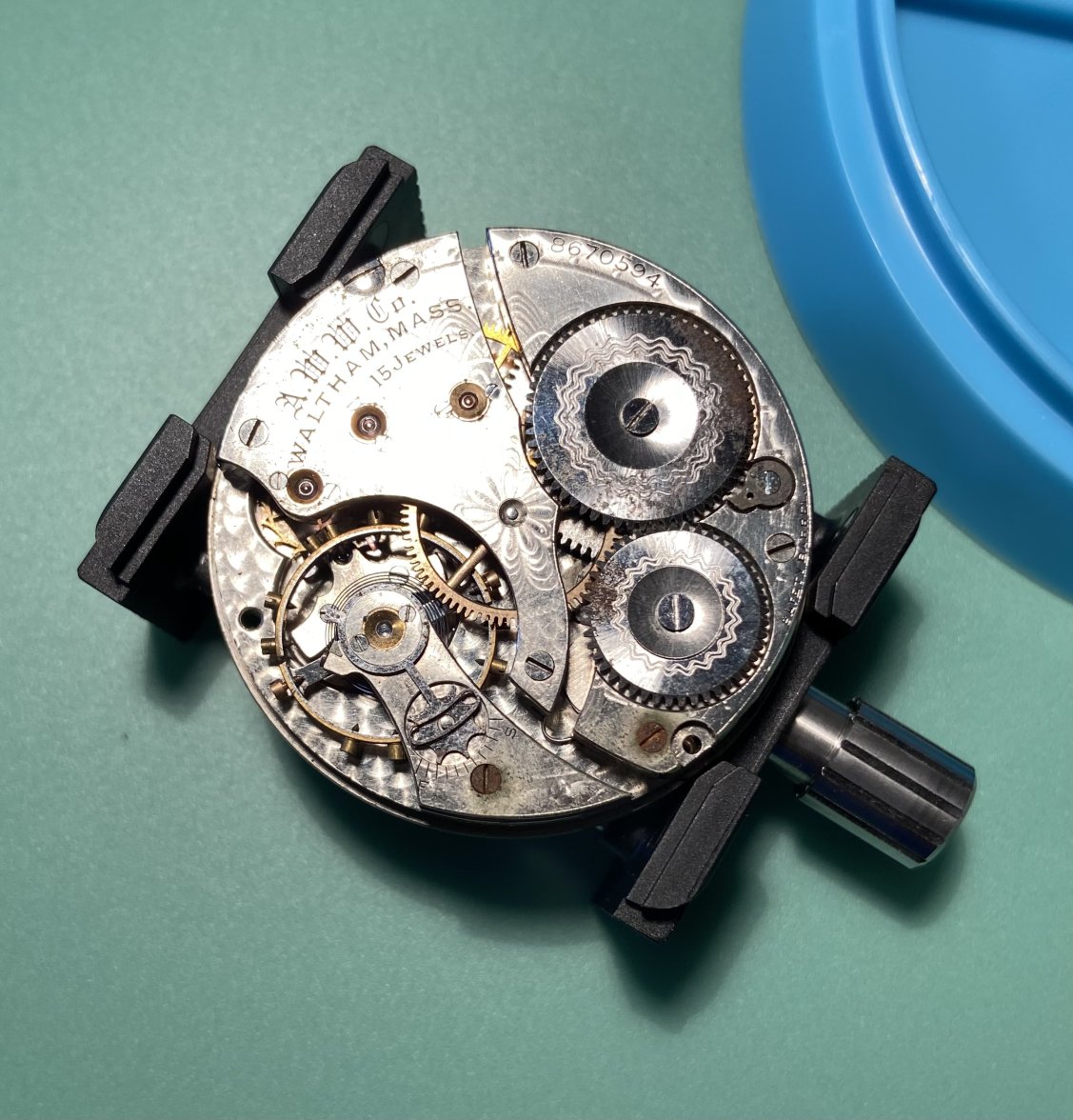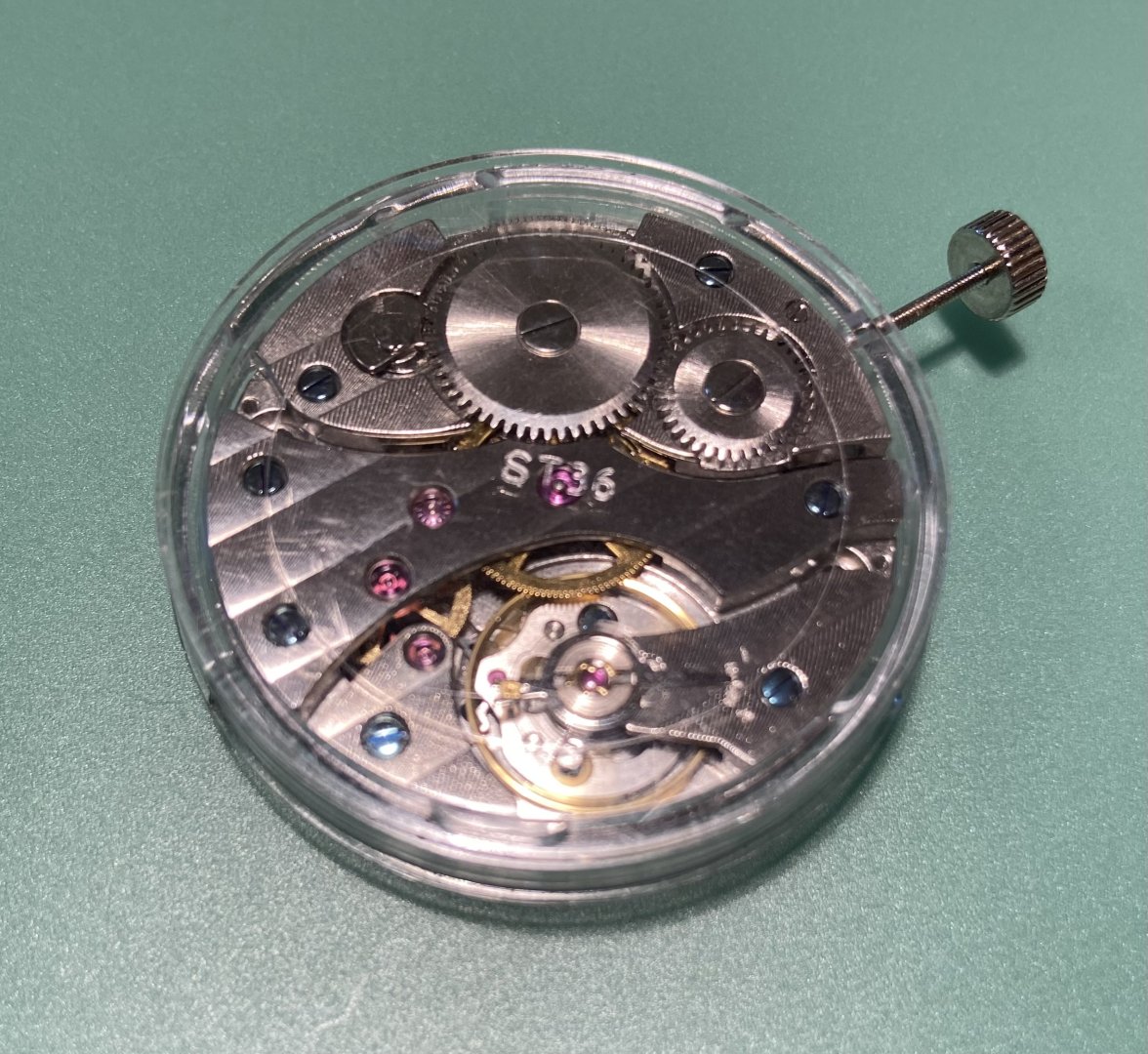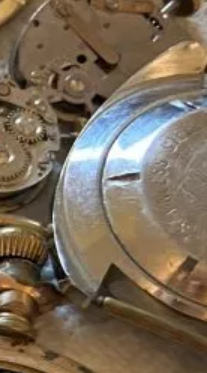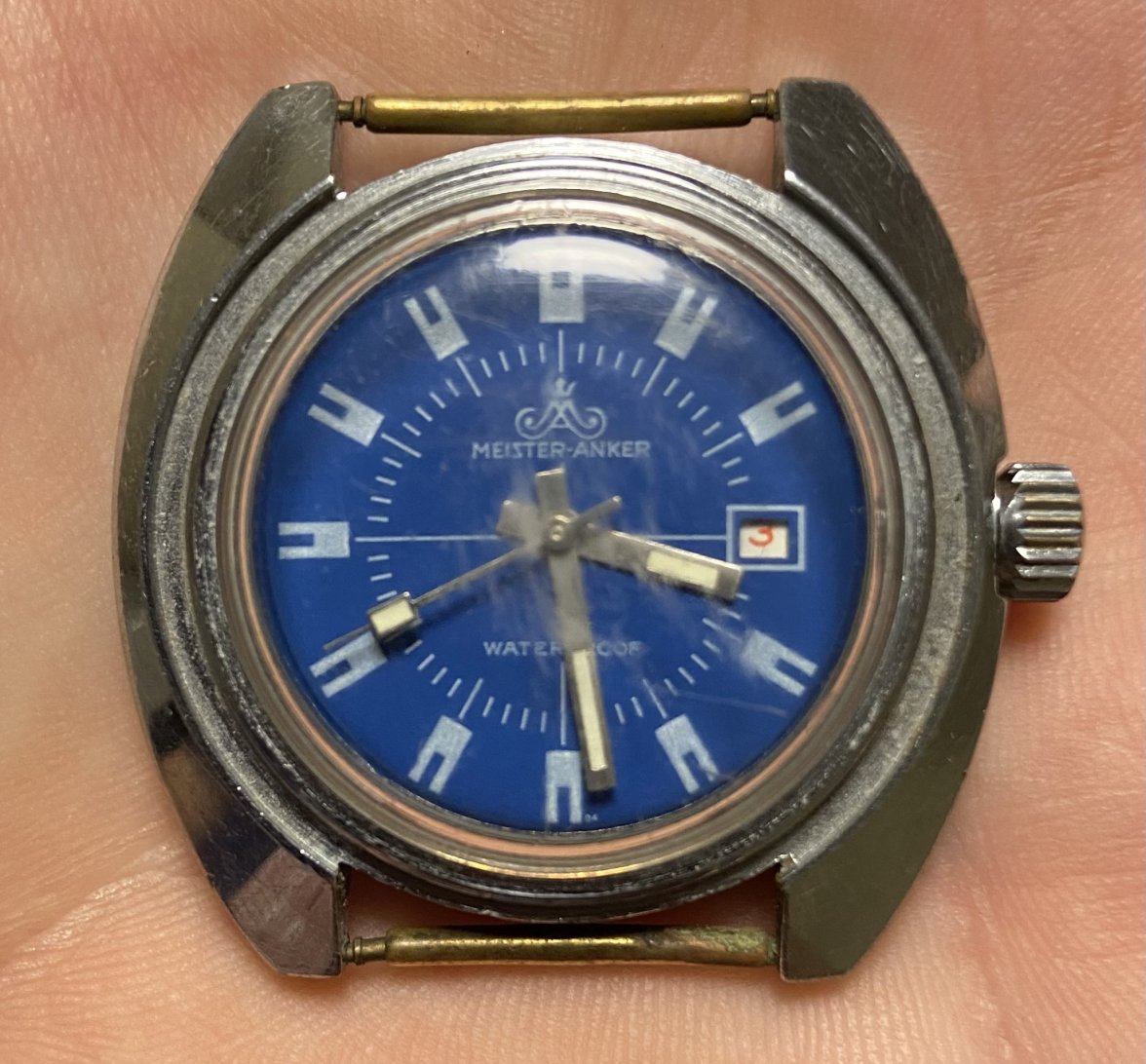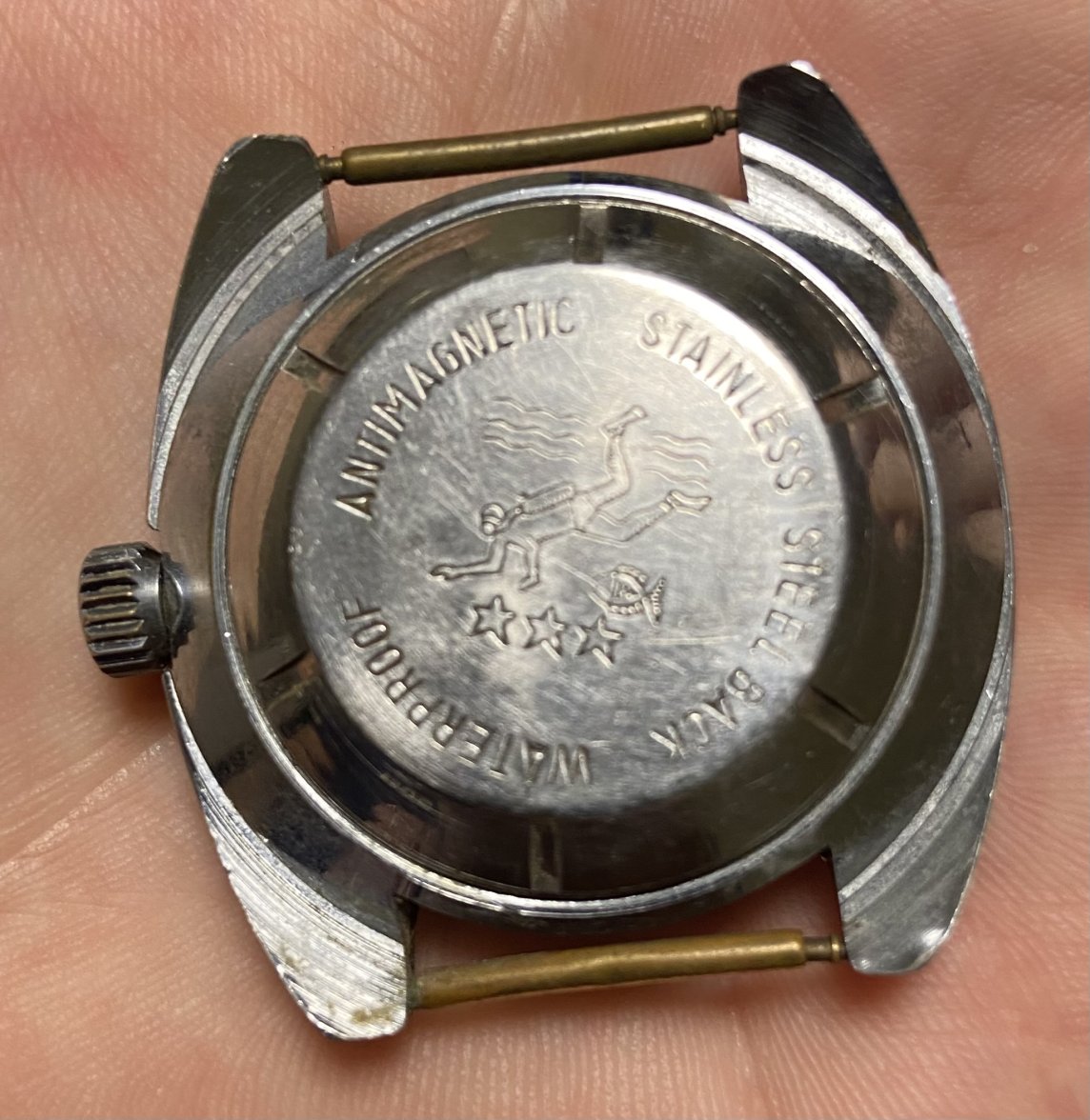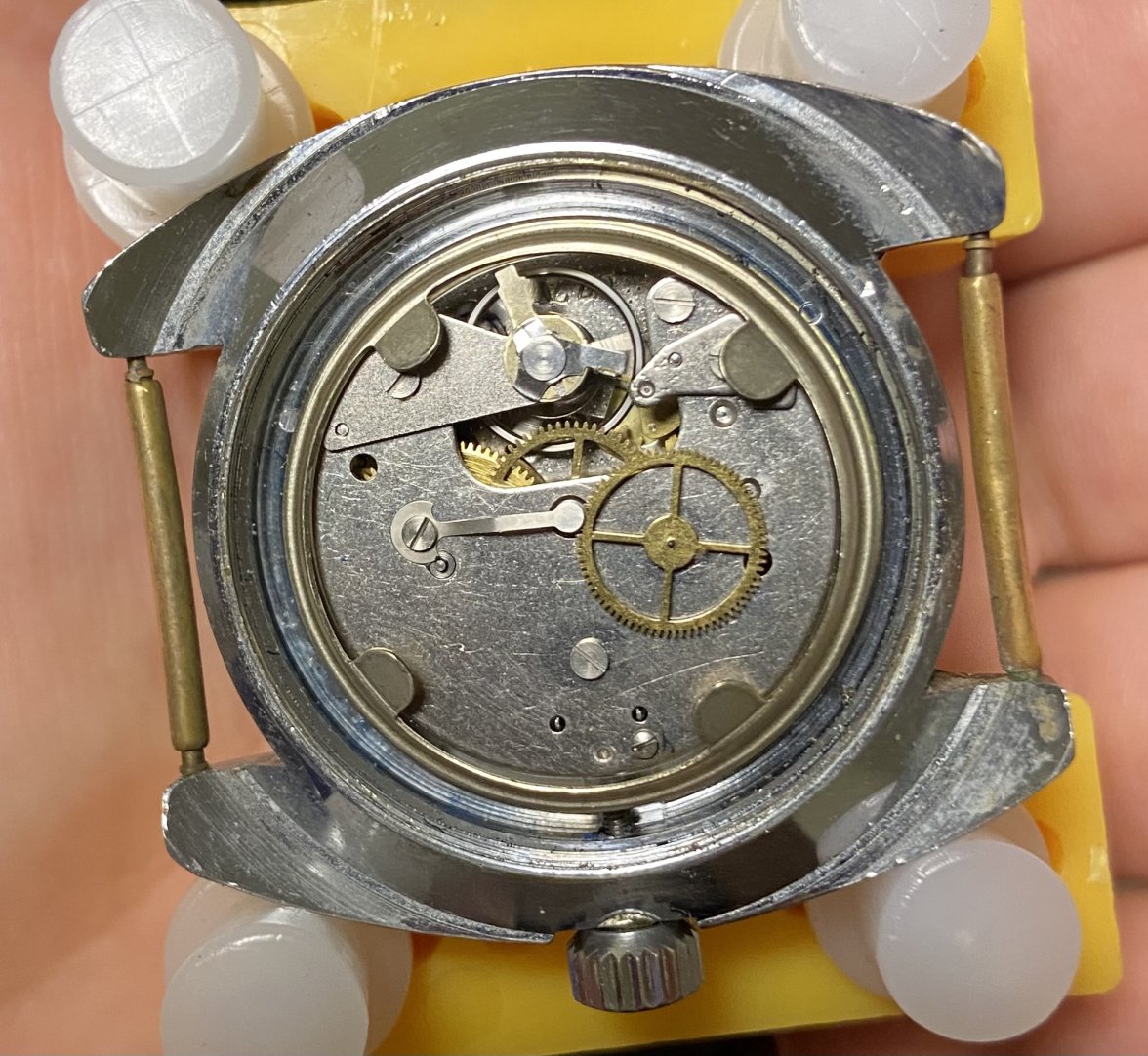Aroxx
·...starts with a single movement. Or something like that. I finally took some free time today and got through a bit more of Practical Watch Repairing by Donald de Carle. I wanted to get hands on so I grabbed a non-runner that looked easy to take apart and went to town. Just followed the basics steps from the book with no worries about causing damage. I didn't completely dismantle every piece, just removed most major components and then put back together. I was having fun so I grabbed the largest movement I have, a Waltham pocket watch, and did the same on that. Probably should have started there but the Waltham finishing is so nice I felt bad using it as the first victim even though it's already basically junked. Most of my junkers are tiny ladies watch movements so not great for learning.
I was hoping to get a little bit of practical context before reading too much. I think I achieved that goal so hopefully things make more sense as I move along. It was also good to get a bit of practice manipulating the tiny pieces. It really is confounding how they can manufacture components this small. Eventually I'll move on to my practice movement so I can put it back together and hopefully get it back to a running state. Then, I'll basically be a watchmaker and start making the big bucks. 😁
The non-runners...
The first victim...
Second victim...
The one I don't want to destroy.
I was hoping to get a little bit of practical context before reading too much. I think I achieved that goal so hopefully things make more sense as I move along. It was also good to get a bit of practice manipulating the tiny pieces. It really is confounding how they can manufacture components this small. Eventually I'll move on to my practice movement so I can put it back together and hopefully get it back to a running state. Then, I'll basically be a watchmaker and start making the big bucks. 😁
The non-runners...
The first victim...
Second victim...
The one I don't want to destroy.
